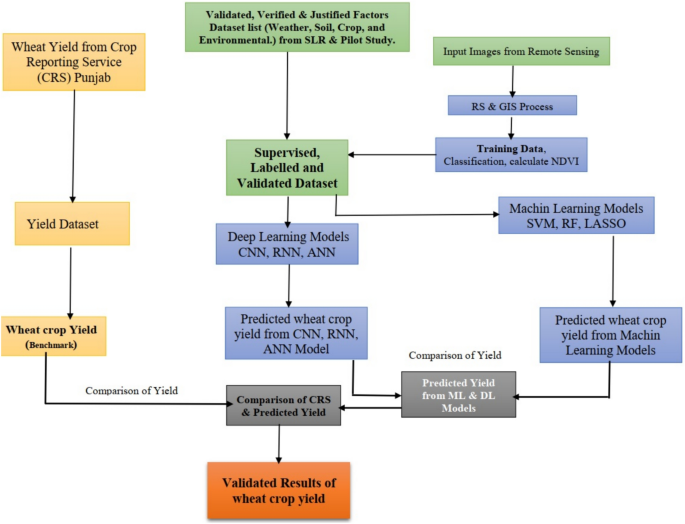5 Top Cryptocurrency Trends Shaping The Second Half Of 2025
The crypto landscape is becoming more dynamic and accessible.
SOPA Images/LightRocket via Getty ImagesCrypto is in for another wild ride in the second half of 2025. From DeFi projects and stablecoin acceleration to the growing overlap of AI and crypto, there is a lot to watch. This article breaks down the biggest trends set to shape the space and how these developments could transform digital assets.
The crypto landscape has transformed dramatically in 2025, driven by regulatory developments, technological advancements, and shifting market dynamics. Donald Trump’s return to office has brought a pro-crypto agenda to the forefront, with the U.S. government establishing a Strategic Bitcoin Reserve and signaling plans for clear, industry-friendly regulations. This shift has sparked renewed interest in digital assets, with institutional investors re-entering the market and major financial players expanding their crypto services.
Looking ahead, 2025 is about making crypto more useful and easier to understand. Innovations in stablecoins, decentralized finance and tokenization give investors new ways to use digital assets. These changes could make payments faster, give more people access to investment opportunities and simplify transactions. It all points to crypto becoming a bigger part of everyday finance.
As digital assets continue to mature, several key trends are gaining momentum. Stablecoins are becoming more mainstream, while new AI-powered crypto applications are pushing the boundaries of automation and data analysis. DeFi is diversifying with more sophisticated protocols, and bitcoin secondary investments, such as ETFs and derivatives, are drawing institutional interest. Meanwhile, tokenizing real-world assets is becoming a game-changer, bringing physical assets like real estate, commodities and fine art onto the blockchain.
These developments could reshape how digital assets are used, traded and regulated. This section will explore each trend, offering insights into its potential impact and what it means for investors.
Stablecoins have become a critical part of the crypto ecosystem, and their influence will only continue to grow in the second half of 2025. These digital currencies, which are pegged to stable assets like the U.S. dollar, offer the benefits of blockchain technology without the volatility of other cryptocurrencies. Tether, the largest stablecoin issuer, is leading the charge, preparing to launch a U.S.-based stablecoin while working closely with U.S. lawmakers to shape crypto regulations.
The broader stablecoin market is also evolving. With the U.S. Office of the Comptroller of the Currency reaffirming that banks can engage in stablecoin activities and new players entering the space, competition is heating up. Stablecoins are no longer just a tool for crypto traders. They are becoming a bridge between traditional finance and the digital economy, offering instant settlement, reduced transaction costs and a stable gateway to the world of digital assets.
The intersection of cryptocurrency and AI is quickly becoming a major trend in 2025, with decentralized AI networks gaining attention. One notable example is Bittensor, a blockchain-based platform that enables users to create, share and monetize AI tools without relying on centralized tech giants. Bittensor’s model is built around subnets, independent communities focusing on specific AI tasks. This approach allows developers to collaborate and compete while maintaining transparency.
This system ensures that high-quality work is recognized, while underperformers are removed. For developers and investors, this creates a more merit-based and sustainable ecosystem.
Other projects, like Ambient, are pushing even further by creating blockchain networks that integrate AI directly into their core operations. Ambient, backed by top venture firms like a16z and Delphi Digital, aims to be a decentralized competitor to centralized AI giants like OpenAI. As these crypto-AI hybrids grow, they promise a future where AI tools are open, decentralized and more secure, making this a trend worth watching for the rest of 2025.
DeFi has long been one of the most dynamic sectors in the crypto industry, but 2025 is shaping up to be a turning point. For years, DeFi thrived in a largely unregulated space, offering users decentralized lending, borrowing and trading without traditional banks. However, this freedom led to fraud, exploitation and regulatory scrutiny.
In 2025, the regulatory landscape for DeFi experienced a seismic shift. The Trump administration adopted a crypto-friendly stance, repealing the IRS's controversial DeFi broker rule and signaling a more supportive approach to digital assets. This decision has created a more favorable environment for DeFi in the U.S., allowing protocols to operate without being treated like traditional brokerages.
Because of the newly implemented regulatory clarity, investor interest in DeFi is soaring. EY reported that the number of investors engaging with DeFi is expected to triple over the next two years, rising from 24% to 75%. This growth reflects the sector's appeal as a way to access financial services without traditional intermediaries. As 2025 continues, the real test for DeFi will be how it balances innovation with compliance, ensuring both user protection and continued growth.
Secondary bitcoin investments are gaining momentum in 2025 as companies and institutional investors seek new ways to gain indirect exposure to bitcoin. These secondary investments include bitcoin exchange-traded funds, futures and even bitcoin-backed bonds. With regulatory clarity improving, these products offer a more accessible way for investors to tap into Bitcoin’s potential without dealing with self-custody complexities.
The trend is fueled by growing interest from corporate treasurers who view bitcoin as a strategic reserve asset. Companies like Strategy, Block, and Semler Scientific have added bitcoin to their balance sheets, using it as a hedge against inflation and a tool for long-term value preservation. The Financial Accounting Standards Board also updated its guidelines in December 2023, allowing companies to report bitcoin using fair value accounting, making it easier to show bitcoin’s actual value on financial statements.
The appeal of secondary bitcoin investments is clear. These products offer exposure to bitcoin’s price growth without the risks of direct ownership. Public companies have already purchased 3.3 times more bitcoin in 2025 than the total new supply mined this year, highlighting the demand. As more firms explore bitcoin as a strategic asset, the market for bitcoin secondary investments is expected to grow rapidly, providing new opportunities for both corporate and retail investors.
Tokenization of real world assets (RWA) is already trending in 2025, transforming how traditional assets like real estate, commodities, stocks and bonds are managed and traded. By representing these assets as digital tokens on blockchain networks, tokenization eliminates the need for paperwork, reduces transaction costs and increases accessibility for investors. Assets that were once illiquid, like private real estate, can now be easily bought, sold or fractionally owned by a global audience.
This trend is gaining momentum as major financial institutions like BlackRock, Goldman Sachs and JP Morgan embrace RWA tokenization. Analysts at VanEck project that the RWA market could exceed $50 billion by the end of 2025, with potential growth to $10 trillion by 2030. As regulatory clarity improves and more investors seek efficient, blockchain-powered ways to access traditional assets, RWA tokenization is set to become a foundational part of the digital economy.
The second half of 2025 is set to reshape the crypto industry with key trends like stablecoins, DeFi, secondary Bitcoin investments, AI-powered blockchain and RWA tokenization. As regulatory clarity improves and major players enter the space, these developments transform how digital assets are used, traded and integrated into the financial system.
Investors should watch for growing institutional interest, expanding use cases, and evolving regulations that could drive market growth. Whether decentralized finance is adapting to new rules, bitcoin is gaining traction as a treasury asset or tokenized real-world assets are creating new investment opportunities, the crypto landscape is becoming more dynamic and accessible.
The biggest trend in crypto for the second half of 2025 is the continued evolution of blockchain technology, with growing adoption in areas like decentralized finance (DeFi), stablecoins and the tokenization of traditional assets.
Yes, AI is already impacting crypto trading by providing advanced data analysis, automated trading strategies and predictive market insights. As AI technology improves, it is expected to make trading faster, more accurate and accessible to a wider range of investors.
Investors should watch for regulatory changes, the continued rise of RWA tokenization and the impact of AI on blockchain and crypto trading. Keeping an eye on institutional adoption and new Bitcoin investment products will also be crucial.
Are Meme Coins Still Relevant?
Meme coins are still relevant, but their popularity has shifted toward niche communities and short-term speculation. Most meme coins lack real utility and often do not retain long-term value.












